About Us
With 30 years’ experience in the Cleanroom industry and 15 years experience in LED manufacturing and technology.
LEDspan was created from a background in Cleanroom construction with a deep knowledge in LED Lighting for the Cleanroom and Controlled Environment Industry, with 30 years’ experience in the Cleanroom industry and 15 years experience in LED manufacturing and technology. At LEDspan, our focus is on creating LED luminaires specific to the Controlled Environment setting. All of our light fittings have market leading efficiencies with IP65 ratings and a clean finish.
LEDspan is a dynamic Bespoke LED Lighting Design company. We provide bespoke lighting solutions for Hi-end Cleanrooms in the Pharmaceutical, BioPharma, Laboratories, Semi-Conductor, Medical Devices, Healthcare, Kitchens, Food Industry, Cold Room & Food Preparation Applications, along with other industrial and commercial sectors.
Our bespoke designs for our IP Rated lights and fittings are specifically tailored to satisfy our corporate clients’ needs. We guarantee all our customers the best and latest in Low UV LED technology solutions. Our products are manufactured in Ireland and the Far East, giving us the flexibility to provide our customers with the most efficient lighting solutions available, as quickly as possible. Our strengths are our experience, design and technical knowledge, as well as our proven manufacturing credentials.
Our customers operate in highly hygienic facilities that require special, easy-to-clean, dust free luminaires that meet all applicable lighting requirements and norms. Our LED controlled environment products give our customers the right solution, with market-leading energy performance. This results in guaranteed low operational cost and excellent financial return. When it comes to innovative pharmaceutical and food industry lights, we are leading the way.
Table of Contents
Technical Information
Here are some answered questions often asked by our customers. If you have any further questions please get in touch, we would be happy to help.

Technical Advisor
Contact Canice
UltraViolet
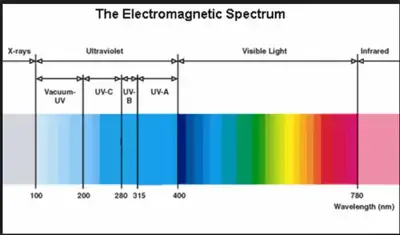 UV rays are a form of electromagnetic radiation that propagate through space, and belong in the same family as x-rays, micro-waves, radio waves, infra-red (heat) and visible light rays. Visible light is the only part of the spectrum that humans can ‘see’ as our eyes have evolved to adapt to this light, primarily due to its abundance on the surface of the earth. UV rays are alongside visible light on the spectrum but have shorter wavelength. (Wavelength is the distance between successive waves) The spectrum is divided into different bands based on their properties. UV rays exists from approximately 100nm to 400nm.
UV rays are a form of electromagnetic radiation that propagate through space, and belong in the same family as x-rays, micro-waves, radio waves, infra-red (heat) and visible light rays. Visible light is the only part of the spectrum that humans can ‘see’ as our eyes have evolved to adapt to this light, primarily due to its abundance on the surface of the earth. UV rays are alongside visible light on the spectrum but have shorter wavelength. (Wavelength is the distance between successive waves) The spectrum is divided into different bands based on their properties. UV rays exists from approximately 100nm to 400nm.- Causes direct DNA damage to skin cells resulting in ‘sunburn’.
- Ages skin prematurely resulting in leathery and wrinkly skin in later life, if subject to long term exposure.
- Causes Skin cancer: Research shows that as many as 90% of skin cancers are due to UV radiation.
- Can cause eye damage and cataracts in later life, if subject to long term exposure.
- Can trigger/exasperate skin disorders such as Lupas flares: an auto-immune system disease whereby the immune system attacks healthy cells, solar urticaria: a skin disorder affected by ultraviolet light and Phytophotodermatitis a skin disorder hyper sensitive to UV light.
- Weakens Plastics
- Fades Colours on fabrics, paintings and furniture.
- Damaging to plants and animals
Sustainability
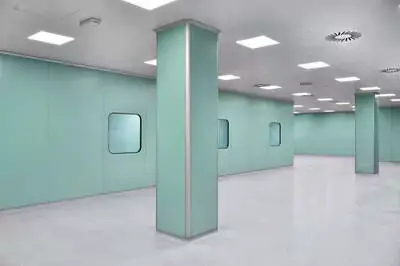 Modern LEDs have a luminous efficacy of approximately 170lm/W in comparison to 10-15lm/W for incandescent lamps and 60-80lm/W for a fluorescent tubes. This results in more light per watt of input power and hence fewer required light fittings for a given area. The efficient lumen per watt ratio of LEDs means a significantly reduced electrical lighting load for a building can be achieved resulting in lower carbon footprint and greenhouse gas (GHG) emissions. The ease at which LED fittings can be further controlled, i.e. via presence detectors or photocells and to which they can be dimmed enable them to offer further energy saving features and help contribute to a sustainable future.
Modern LEDs have a luminous efficacy of approximately 170lm/W in comparison to 10-15lm/W for incandescent lamps and 60-80lm/W for a fluorescent tubes. This results in more light per watt of input power and hence fewer required light fittings for a given area. The efficient lumen per watt ratio of LEDs means a significantly reduced electrical lighting load for a building can be achieved resulting in lower carbon footprint and greenhouse gas (GHG) emissions. The ease at which LED fittings can be further controlled, i.e. via presence detectors or photocells and to which they can be dimmed enable them to offer further energy saving features and help contribute to a sustainable future.
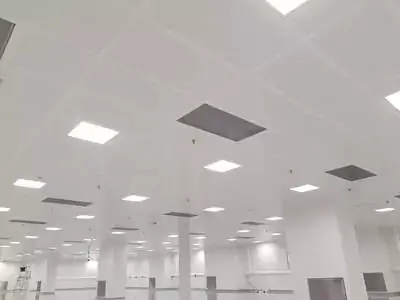 LED light emission is directional and can emit light for 180 degrees, compared to fluorescent and discharge lamps, which emit all 360 degrees around the lamp, This directional feature is typically an advantage because light is usually desired over a target area, and so LEDS emit less glare, overspill and uplight / sky glow pollution, features that further contribute to energy efficiency by reducing waste light. You can read more about the impact of directional lighting by learning about a measurement called “useful lumens” or “system efficiency.”LEDs have virtually zero maintenance costs and the frequency with which lamps have to be changed out is by far the best on the market. Fluorescent bulbs require regular re-lamping and ballast replacement in addition to the labour cost to monitor and replace ageing or expired components.
LED light emission is directional and can emit light for 180 degrees, compared to fluorescent and discharge lamps, which emit all 360 degrees around the lamp, This directional feature is typically an advantage because light is usually desired over a target area, and so LEDS emit less glare, overspill and uplight / sky glow pollution, features that further contribute to energy efficiency by reducing waste light. You can read more about the impact of directional lighting by learning about a measurement called “useful lumens” or “system efficiency.”LEDs have virtually zero maintenance costs and the frequency with which lamps have to be changed out is by far the best on the market. Fluorescent bulbs require regular re-lamping and ballast replacement in addition to the labour cost to monitor and replace ageing or expired components.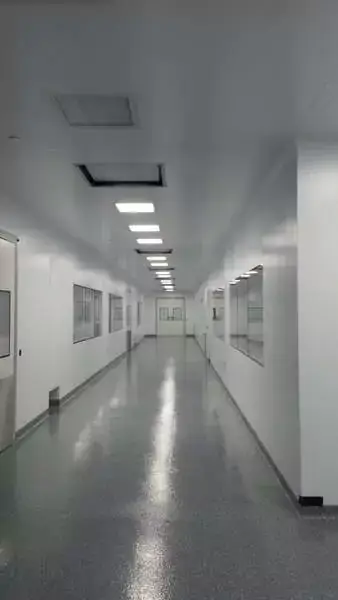 LED Lamps last longer than any light source commercially available on the market. Lifespans are variable but typical values range from 25,000 hours to 200,000 hours or more before a lamp or fixture requires replacement. Fluorescent lights have good lifespan relative to other conventional lamps but not compared to LED. Typical fluorescent lifespan values range from 7,000 hours to 15,000 hours before a lamp requires replacement. Note: sometimes fluorescent lights need to be changed out before the end of their useful life to pre-empt serious degradation effects like flicker or changing light color (turning pink).
LED Lamps last longer than any light source commercially available on the market. Lifespans are variable but typical values range from 25,000 hours to 200,000 hours or more before a lamp or fixture requires replacement. Fluorescent lights have good lifespan relative to other conventional lamps but not compared to LED. Typical fluorescent lifespan values range from 7,000 hours to 15,000 hours before a lamp requires replacement. Note: sometimes fluorescent lights need to be changed out before the end of their useful life to pre-empt serious degradation effects like flicker or changing light color (turning pink).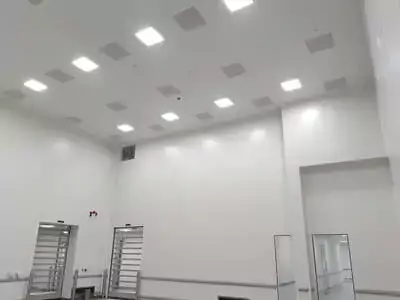 LED luminaires convert more than 50% of their total input power into visible light, a significant improvement on incandescent and fluorescent luminaries which only convert approximately 10% and 20% respectively. The resulting (wasted) energy is emitted in mainly infra-red (Heat) and Ultra-Violet (UV) spectrums. Heat emission from incandescent and fluorescents lamps add to the overall heat load in the building increasing the mechanical cooling requirement and in turn the electrical building load, GHG emissions and carbon footprint. Efficient LED lamps means significantly less heat emission per lamp and less waste heat offloaded onto the building A/C cooling system to deal with.
LED luminaires convert more than 50% of their total input power into visible light, a significant improvement on incandescent and fluorescent luminaries which only convert approximately 10% and 20% respectively. The resulting (wasted) energy is emitted in mainly infra-red (Heat) and Ultra-Violet (UV) spectrums. Heat emission from incandescent and fluorescents lamps add to the overall heat load in the building increasing the mechanical cooling requirement and in turn the electrical building load, GHG emissions and carbon footprint. Efficient LED lamps means significantly less heat emission per lamp and less waste heat offloaded onto the building A/C cooling system to deal with.Meet The Team
LEDspan has a dedicated team of experts with an extensive understanding of LED Lighting. If you have any questions, please dont hesitate to contact us.

Operations Director

Technical Lighting Manager

Electrical Technician

EHS Manager

Group Marketing Lead

Reception/Administrator

